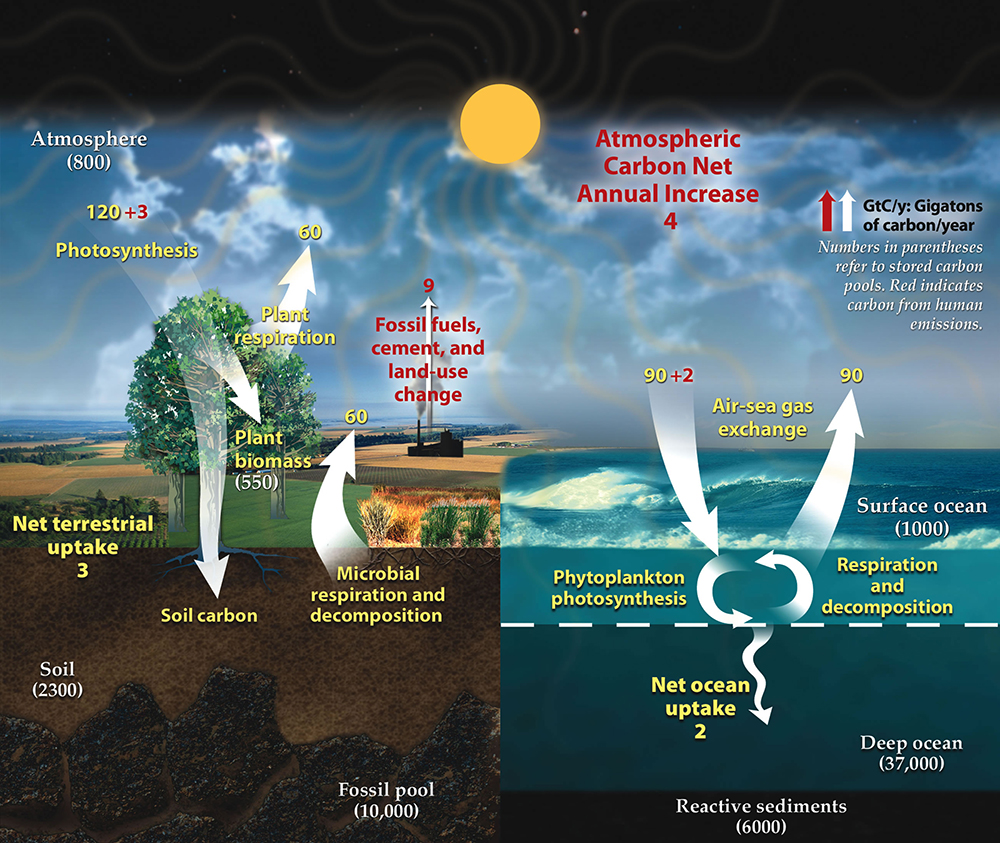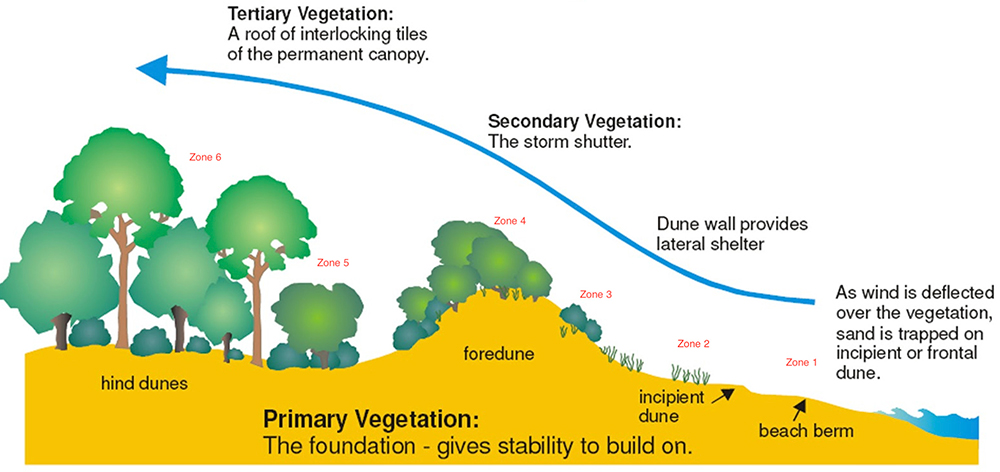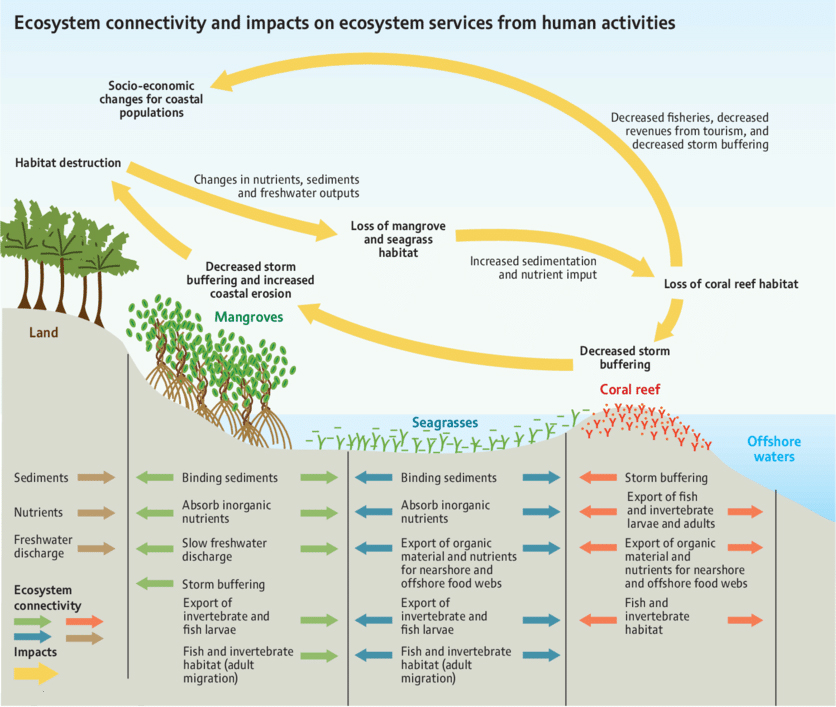


Ecology is the scientific discipline that studies interactions between individual organisms and their environments, including interactions with both conspecifics and members of other species. Its importance has been recognized at least since Darwin’s publication of Origin of Species, which categorized ecological interactions as “the struggle for existence”. Since then, there has been an ongoing endeavor to systematize investigations of this struggle into a scientific discipline.
The term “Ecology” is attributed to Ernst Haeckel, who coined it to provide a name for the science of what Darwin called the “Struggle for Existence”. This struggle was a focal point of early evolutionary thought as it constituted an important driving force of evolution by natural selection. Organisms struggled in their environments, competing over scarce resources. The study of the outcomes of these struggles eventually developed into Evolutionary Biology, while the study of the struggles themselves developed into the discipline of Ecology.
The vast majority of eco systems not only took many hundreds or usually thousands of years to reach a stable situation, but have since then, existed for many hundreds or usually thousands of years. Each species within that system, be it flora, fauna or microscopic creature, attempts to increase its population and influence, but is held in check by all of the other species present. Thus we have a stable system, which will continue forever, provided there are no radical changes to the local climate or geology.........or no other external influences. It is this last factor which is the major realm of the conservationist.

All life is dependent on death and recycling via the Carbon Cycle
The role that humans, and to a lesser extent animals, play in the ongoing stability of an ecosystem cannot be understated. Some of the most destructive influences are erosion, deforestation and invasion by pest species. Humans are often involved in all of these processes. The role of the conservationist is thus, to eliminate or at least to mitigate, the destructive actions of humans and problem animals.
In the case of the Greater Wangetti Region, Wangetti Org has a history of securing funding for feral weed control, and the process of preventing illegal off-road vehicle access. In partnership with the Clean Up Australia campaign, Wangetti Org members and other conservation minded citizens, are involved in a yearly rubbish clean up. This not only makes the area look more presentable, but also reduces degraded land areas, thus allowing natural regrowth.
Some areas are far more sensitive to destructive interference than others. For example, the Type 8a and 15d rainforest which grows on barely fertile sand dunes along Wangetti Beach, is particularly sensitive to the effects of erosion and deforestation, both caused by illegal off-road vehicles. Another example is the ultra-delicate front-line dune eco system, where extreme salt-tolerant plant species, such as Beach Morning Glory, Indian Almond and Coastal She-Oak hold the integrity of the dunes in place. An ignorant off-road motorcyclist can destroy in one hour, what took a beach vine years to accomplish.
Mangroves may present as a muddy, insect-ridden place to clamber through chasing mudcrabs, or to hack into to create an entry for fishing, but the truth is they are a complex life-support system for a myriad of creatures. Please treat them with the respect they so genuinely deserve.
The Wangetti Beach area is not the only area in Greater Wangetti under pressure from human interference. The Hartley's Creek area, from the highway to the waterfall, has come under a huge increase in visitors in recent years. This has lead to more erosion on the trail, but more importantly has lead to an increase in rubbish, pollution in the creek and vandalism. There are a number of other trails in the region, some on the eastern side of Macalister Range, and some running off Quaid's Rd in various places. All of these trails were originally created by either tin miners, loggers or fire-fighting vehicles. Off-road vehicles are able to legally access some of these trails, but it would be most advantageous for the surrounding bushland, if those vehicles stayed strictly on the trails.
Anyone who accesses the region should try to do just one thing.....leave the place as you found it. If you cannot do this, then perhaps you have come to the wrong area.
Coastal beaches and dune development, are formed with the accumulation of marine sand that is transported to the coast by waves and currents in the water. Strong winds continue to move the sand onto land and deposit it behind the beach, mostly trapping it in vegetation. It also accumulates at the bases of hills and cliffs.
In Australia there is a variety of coastal dune landforms. They range from relatively small dunes that sit immediately behind the beach, tens of metres wide and a few metres thick, to large dune fields comprised of dunes that can extend several kilometres inland and can rise a few hundred metres above the shoreline representing long-term accumulation of large volumes of sand.
Vegetation immediately landward of the beach has adapted to growing in an environment that is affected by strong, salt laden winds and high sand temperatures so that most have a low-growth form and either fleshy, or fairly leathery leaves which help these plants to survive. In this exposed location, the coastal rainforest vegetation has been wind sheared by strong, salt laden winds over many years. This has created a type of rainforest community on the top of the tertiary level.
On the western side of the dune vegetation, fringing the creeks and lagoons, are a complex of riparian wetlands, dominated by Paperbark trees and other species of Casuarina, which have adapted to growing in either fresh or brackish waterlogged soils.

The 6 zones present in an Australian beach dune system
The diagram below shows the ecosystem connectivity between mangroves, seagrasses and coral reefs. Ecological and physical connectivity between ecosystems is depicted for each ecosystem: terrestrial (brown arrows), mangroves (green arrows), seagrasses (blue arrows), and coral reefs (red arrows). Potential feedbacks across ecosystems from the impacts of different human activities on ecosystem services are also shown (yellow arrows).
